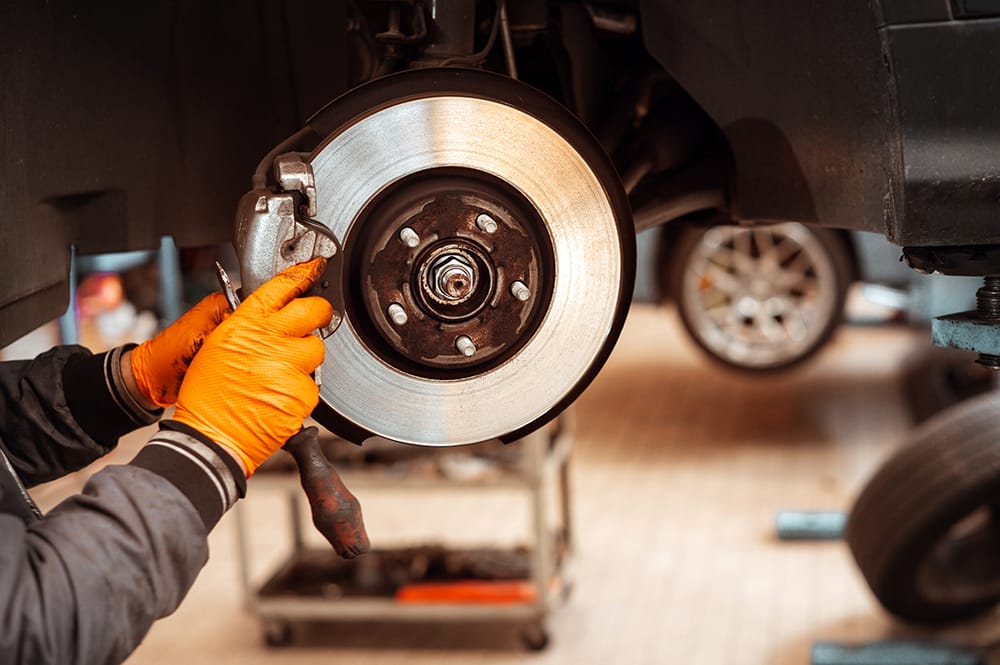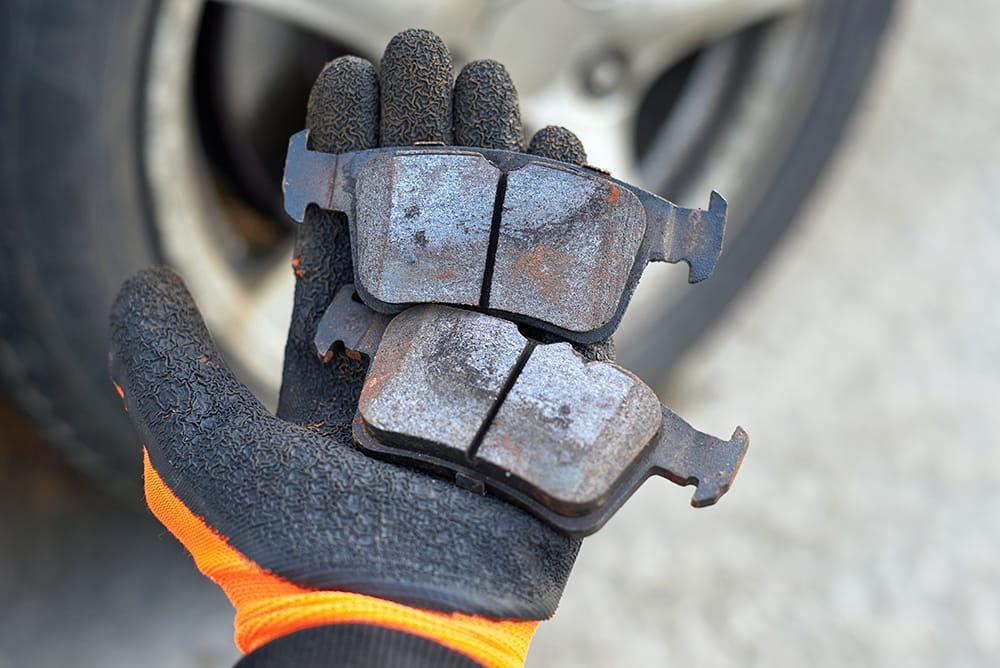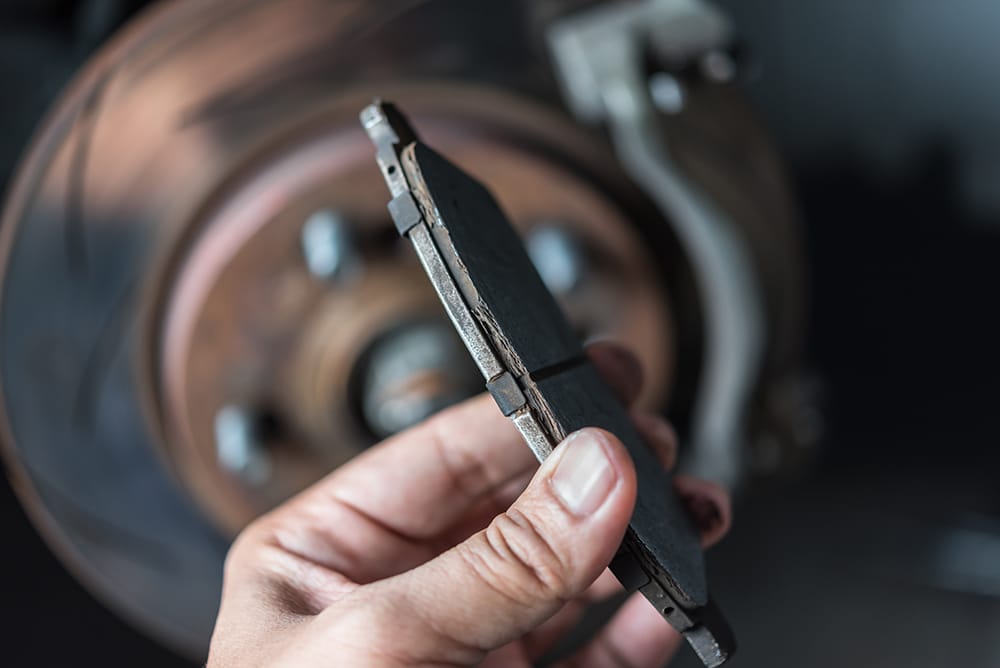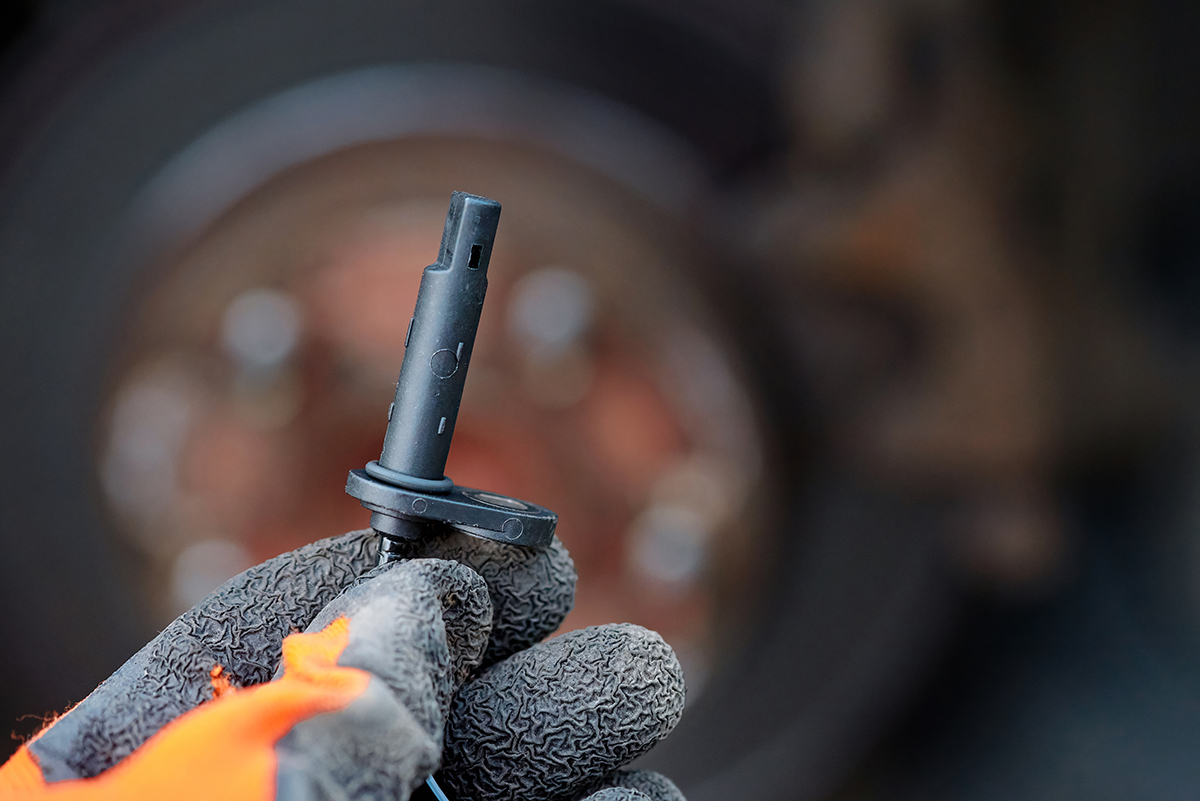Take a brake.
Brakes are an important part of vehicle repair for your car or truck. Caring for your car’s brakes involves more than changing the brake fluid and replacing the brake pads. Find out what else you need to know about brake repair and how to maintain good brakes on your vehicle – so you can slow your vehicle and come to a stop with confidence.

Image: An automotive repair technician replaces the brake pad on a vehicle being serviced.
How do vehicle brakes work?
Brakes are a system of parts that work together to slow the rotation of the wheel. The brake disc (also known as the rotor) is made of metal or very hard composite material. It is connected to the wheel and/or the axle. The brake pads, made of tough friction-producing material (most often another metal these days, since they used to be asbestos and that is no longer allowed), are attached to brake calipers (the things that grip). The calipers straddle the disc and press the brake pads against it to slow the wheel’s rotation. All of this action is controlled by the driver applying pressure to the brake pedal inside the car.
But it isn’t all about the hard parts in the system. In fact, the real work-horse here is your brake fluid. Brake fluid is a “hydraulic fluid.” That simply means that it powers all the moving parts described above. Brake fluid has to work perfectly under high pressure and high temperatures. A brake flush replaces worn out, old, or dirty brake fluid. This is important because as brake fluid ages it absorbs moisture, causing it to lose effectiveness. When that happens, your braking power fails.
What happens when brakes wear out?
Your vehicle's rotors have a tough job and can become warped from heavy use. A sign of rotor warp would be a pulsing in the brake pedal when stopping from high speeds. Sometimes the steering wheel might wobble, too. But another problem is simply that rotors wear out. During the era that rotors were metal and pads were asbestos, you might go through several changes of brake pads before you ever needed to replace a worn out rotor. Not so anymore, since brake pads are equally hard these days. Metal against metal will wear the rotors out at about the same rate as the pads.
Because of the labor costs involved, it is a lot more cost-effective these days (on most cars) to replace rotors than it is to grind (machine) them down and resurface them as our granddads used to do.

Image: An automotive repair technician holds worn-out brake pads.
This is how you should care for your brakes.
The most basic level of brake care involves regularly checking the brake fluid level, getting a brake flush, and changing your brake pads. Good mechanics (like the friendly automotive technicians at Metro Motor) will inspect the complete brake system to see how all the parts are working together and what may need attention or replacement.
As described above, the brake rotors, or discs, are what your car’s brake pads clamp down on to stop the wheels from spinning. For this reason, it is just as important to have your rotors checked along with the brake pads at regular service intervals.
Signs that your brakes may be wearing out include brake squeal or a spongy feeling when you depress the brake pedal. And if you find that you just can’t stop as quickly as you used to, don’t waste any time getting your car to Metro Motor for a check-up.
We can take care of things pretty quickly and get you back on the road with the good stopping power you need to be safe.
What is a brake flush?
A brake flush, also known as a brake fluid exchange, is a procedure that involves replacing a vehicle's brake fluid with new fluid. The process also removes air and moisture from the brake lines, while your auto repair specialist inspects the brake system for leaks and other issues.
Regular replacement of brake fluid has become a requirement in virtually all auto manufacturers' maintenance programs. It's so important to address the efficiency of the entire braking system, while eliminating brake squeal and chatter. In addition to the brake flush, your vehicle might require part repair or replacement. Your automotive service technician will recommend the best path forward for your vehicle.
- The Problem
Brake fluid becomes oxidized and contaminated over time and through heavy use. Heat and moisture cause corrosion on parts and brake fluid failure. This causes a spongy brake pedal and shows up in discolored brake fluid. - The Solution
The entire brake system is inspected for leaks, master cylinder corrosion, worn pneumatic parts, harmful varnish build-up, broken or rusted bleeder valves, worn rotors and drums, and air in the brake lines. All old brake fluid is replaced with new and parts are repaired or replaced as necessary, resulting in a longer-lasting, more efficient, and safer braking system.
For drivers on roads in D.C., Maryland, and North Virginia, Metro Motor is your home for comprehensive brake repair and replacement services, including brake flush and system diagnostics. Stay safe out there; make an appointment to have your brakes inspected today.
Keep exploring.
![]()
Request
Service




